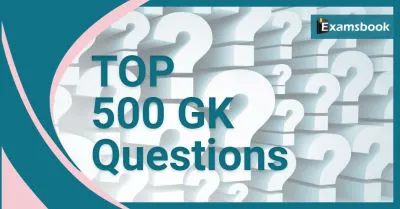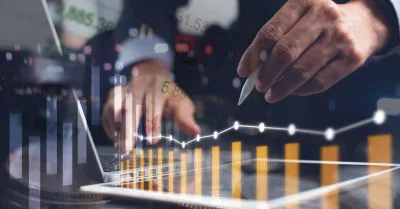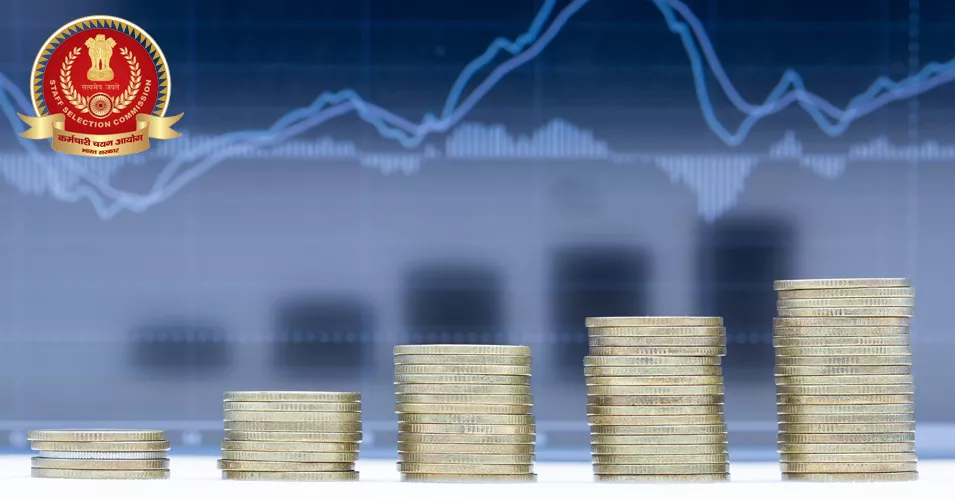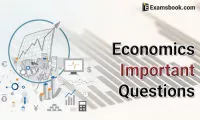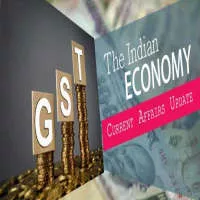- Free Test Series, Mock tests and Practice Tests
- Time proven exam strategies
- Exam analysis and simulated tests
- Hand-on real time test experience

Recently Added Articles View More >>
Are you gearing up for the SSC exams and looking to ace the General Knowledge section? Our comprehensive Indian Economics GK Quiz is designed to help you master the economic concepts and current affairs crucial for success.
Welcome to our blog on Indian Economy General Knowledge (GK) questions tailored for SSC Exams! This comprehensive guide is designed to equip aspirants with crucial insights into the Indian economy, encompassing topics such as economic policies, growth indicators, budgetary allocations, and key economic reforms.
Welcome to our Economics GK Quiz for Competitive Exams blog! Whether you're preparing for government job tests, banking exams, or any other competitive assessments, our Economics GK Quiz blog is your go-to resource for mastering economics general knowledge.
Welcome to the GK Questions and Answers for Bank Exams blog! This dedicated platform is your ultimate resource for mastering general knowledge and current affairs, crucial for acing bank exams like IBPS, SBI, RBI, and more.
Welcome to our Indian Economics GK Quiz with Answers blog, where we unravel the complexities of India's economic landscape through engaging quizzes! Test your knowledge on topics ranging from macroeconomics to fiscal policies, and learn fascinating facts about India's growth trajectory, monetary systems, and global trade dynamics.
Welcome to our Indian Economics GK Quiz, tailored for competitive exam aspirants! Dive into a world of economic principles, policies, and key figures that shape India's financial landscape. Test your knowledge and sharpen your understanding of topics ranging from fiscal policies to market dynamics.
Welcome to our Rajasthan Economy GK Questions and Answers blog! Here, we delve into the economic landscape of Rajasthan, one of India's most vibrant states. From its rich cultural heritage to its burgeoning industries, we explore the key sectors driving its economy, such as tourism, agriculture, and minerals.
Embark on a journey of knowledge with our Top 30 General Knowledge Questions and Answers blog! From history to science, geography to pop culture, our carefully curated selection of trivia will challenge and entertain you.
Most Popular Articles
Most Popular Articles
Recently Added Questions
The rate at which the central bank of any country borrows money from the commercial banks within its own territories is called:
848 0 6572eaa4a1070fbf9bedd64b- 1Primary Lending Ratefalse
- 2Reverse Repo Ratetrue
- 3Repo Ratefalse
- 4Secondary Lending Ratefalse
- Show AnswerHide Answer
- Workspace
- SingleChoice
Answer : 2 Reverse Repo Rate
Explanation :
The reverse repo rate is the rate at which the Reserve Bank of India borrows funds from commercial banks in the country. It is the rate at which commercial banks in India park their excess money with the Reserve Bank of India, usually for the short term.
In India, which of the following statements about the National Investment Fund is true?
Statements:
I. It was created in 2005.
II. 75% of its annual income was to be used for schemes promoting health, education and employment.
III. It was dissolved in 2018.
- 1Only statement Ifalse
- 2Only statement IIfalse
- 3Only statements I and IIIfalse
- 4Only statements I and IItrue
- Show AnswerHide Answer
- Workspace
- SingleChoice
Answer : 4 Only statements I and II
Explanation :
All the statements about the National Investment Fund in India are true.
I. It was created in 2005.
II. 75% of its annual income was to be used for schemes promoting health, education and employment.
Which Indian finance minister was India’s delegate to the World Monetary Conference at Bretton Woods in 1944?
958 0 64c22a2a96ae1f4842fef06d- 1KC Neogyfalse
- 2CD Deshmukhfalse
- 3John Mathaifalse
- 4RK Shanmukham Chettytrue
- Show AnswerHide Answer
- Workspace
- SingleChoice
Answer : 4 RK Shanmukham Chetty
Explanation :
1. In the World Monetary Conference at Bretton Woods in 1944, R. Of. Shanmukham Chetty served as the Indian Finance Minister.
2. Served as Speaker of the Central Legislative Assembly of India, and also as Dewan of Cochin State from 1935 to 1941.
The difference between Revenue Receipts plus Non-debt Capital Receipts (NDCR) and total expenditure is called ______.
1.2K 0 64bfc92123047f4c71e1cb68- 1Revenue Deficitfalse
- 2Fiscal Deficittrue
- 3Effective Revenue Deficitfalse
- 4Primary Deficitfalse
- Show AnswerHide Answer
- Workspace
- SingleChoice
Answer : 2 Fiscal Deficit
Explanation :
1. The difference between the sum of revenue receipts and Non-Debt Capital Receipts (NDCR) and total expenditure is called fiscal deficit.
2. Fiscal deficit is an important indicator of the financial position of the government.
3. It shows how much difference there is between the current income and expenditure of the government.
4. Fiscal deficit can be influenced by many factors, including.
- Economic situation: During an economic recession, the government often increases the fiscal deficit to provide stimulus to the economy.
- Political pressure: Governments often run up fiscal deficits to raise funds for social programs.
- Military spending: Governments often run fiscal deficits to increase military spending.
- 1Only Btrue
- 2Neither A nor Bfalse
- 3Only Afalse
- 4Both A and Bfalse
- Show AnswerHide Answer
- Workspace
- SingleChoice
Answer : 1 Only B
Explanation :
1. Only B is correct.
2. India has the highest GDP in dollar terms as compared to Sri Lanka, Bhutan and Bangladesh.



